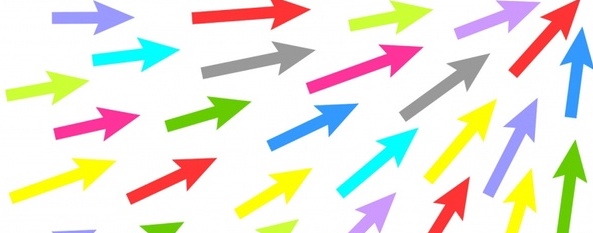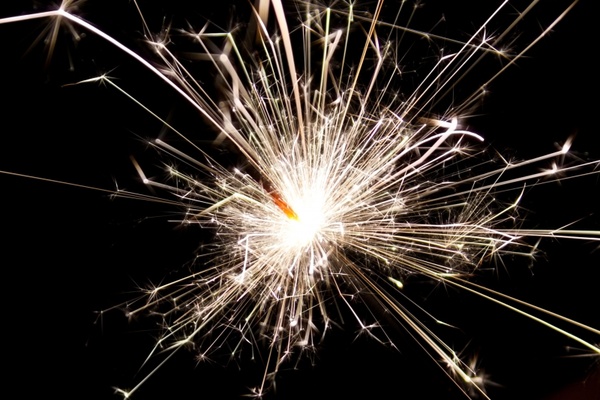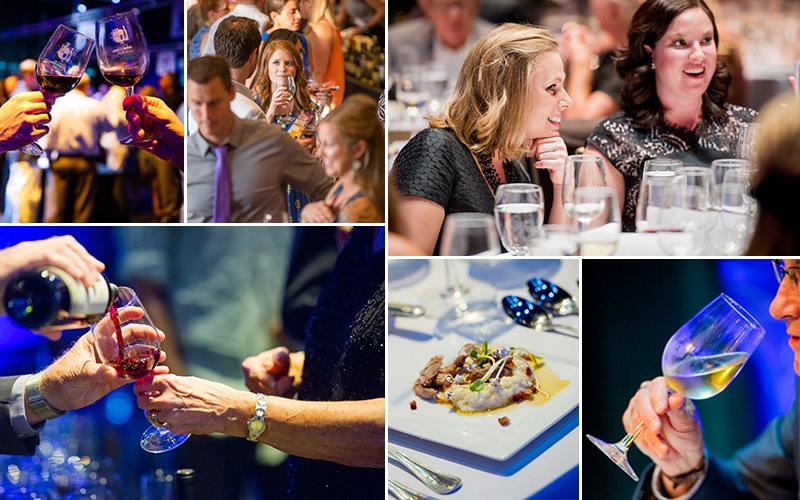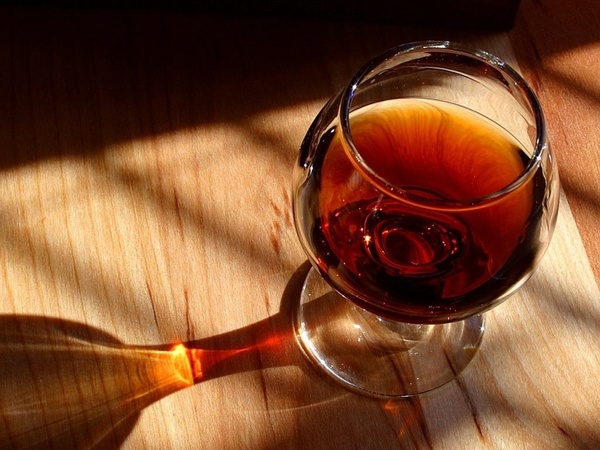
by Lorri | Jun 15, 2016 | UnCorked
One of my goals with this column (in addition to offering honest recommendations of wines available in our market) is to stay apprised of current issues in the wine world and share how they relate to us, the consumers.
If you’re a frequent reader of this column, some of these “trends” may be familiar to you, as I’ve written about them before. And I think many may be here to stay.
Over the past few months I’ve been keeping my eye on the forecasts among the experts at Forbes, Entrepreneur, Wine Enthusiast, The Wine Council and Nielson’s annual report on U.S. wine trends.
Here’s a recap and a few predictions of what’s to come.
Bubbly is overflowing. The Wine Council reported last year’s trends saw, “Thirty-one percent of drinkers purchased Prosecco for the first time but another 35 percent shifted to other sparkling wines.” If this pattern continues, we are going to see more and more producers considering offering bubbly. And with lower alcohol content, fewer calories than most wines and a range of prices I predict we will see sparkling wine and Champagne throughout the year, not just during the holiday season.
More options by the glass. This trend may be the most beneficial to consumers. With advances in technology including wine taps and more sophisticated preservation devices for keeping opened bottles fresh, wine drinkers will have more opportunities to enjoy a wider variety of wines. The Coravin system, designed by a medical device inventor, works by inserting a long needle into the cork of an unopened bottle of wine. With the push of a button, argon goes into the bottle allowing the wine to flow through the same needle. After the pour and taste, remove the needle and, voila, the cork reseals.
The Rise of Female Wine Drinkers. According to a January Entrepreneur article, “Women comprise 56 percent of the total wine drinking population, which is particularly interesting in the case of a millennial, where women account for 66 percent of the population. … And while men represent 67 percent of beer sales, women are increasingly being wooed by wine, which they view as more innovative.”
Who says wine has to come in a bottle? The same article in Entrepreneur gave strong statistics supporting the idea that the bottle is being pushed aside for the box. “While 750-mL glass bottles solidly hold 70 percent of the market, 3 liter boxes and Tetra packs posted the strongest growth, while cans are also attracting consumer attention. At 3.3 percent of the market share, 3 liter boxes grew 13.7 percent and 12.3 percent in value and volume, respectively, while Tetra (only one percent of the market) grew 21.9 percent and 21.8 percent. Cans — just a tenth of a share — grew by 59.9 percent and 128.9 percent in value and volume.”
What’s that grape? Wine drinkers are eager to explore all the world has to offer. We will see more and more consumers reaching for unique grape varietals, some unheard of by most, such as Picpoul, Tannat, Mourvedre, Vermentino and Aglianico.

by Lorri | Jun 8, 2016 | UnCorked
As I always do this time of year with this column, I continue campaigning for dry rose wines. What started as a fantasy — to have every wine drinker in the world declare his adoration for rose — seems to be turning into reality. Each time a reader tells me about the joy of discovering rose, it brings me joy and confirms my quest is paying off. So with your palate already savoring the rose revival, it’s time to give credit to the sparkling fizzy one, too.
Most Champagne and sparkling wines are usually only sought as celebration drinks, rarely as a fun, refreshing option for everyday. And sparkling rose is even more seldom an option beyond a Valentine’s Day romance, often ignored the rest of the year.
With sparkling rose, it’s not just the color that stands out in an ocean of ordinary white fizzy wines. These wines not only look different but have an exceptionally unique smell and taste. They are made using the same method as most Champagne and sparkling wines but with different grapes, which alters the flavor profile. These wines technically can be made with any red grape ranging from the powerful shiraz to the delicate pinot noir. As with any rose, in addition to the flavor profile, the winemaker is also looking for a specific hue. The short time spent in contact with the skins of red grapes determines the color.
The flavor depends on the grapes. They are usually the refreshing flavors of red berry fruits — cherry, strawberry, red currant and dominated by raspberry. Adding to the complexity of sparkling rose wines you can even find citrus, floral or even orange zest in the depth of these wines.
One of my favorite things about sparkling rose is that just as with still rose, it truly fits every food pairing and social occasion. Not only is it a light-bodied wine with a refreshing summer cool down that can be enjoyed on its own, it can endure a diverse food lineup. These foods can range from summer salads, grilled meat and vegetables to the spice and sweetness of barbecue sauces.
So, look out moscato and prosecco … the sparkling roses revival is underway.
THE VALUE
- NV Segura Viudas Brut Rose, Spain (about $10 retail)
THE SPLURGE
- NV Chandon Sparkling Rose, California (about $25 retail)

by Lorri | Jun 1, 2016 | UnCorked
There are many winemakers visiting our state but few are as anticipated as Anthony Bell of Bell Wine Cellars. Bell’s relationship to Arkansas has been many years in the making. He always brings his infectious personality along with his compelling wines, making his arrival more than just a tasting; for many it feels like a welcome visit with an old friend. This past week we were honored to once again have him taste with us, dine with us and, more importantly, share his remarkable craft.
The wines from Bell Wine Cellars are a perfect lesson in “terroir,” a French term used to refer to the unique characteristics of the environment in which the grapevine grows. It includes the soil, climate, and influences around the vineyard such as bodies of water, mountains, even the clone used. (A clone is a vine created from a cutting from an existing vine.) This interaction of climate has even more layers of expression, from the macroclimate (a larger area) to the mesoclimate (a smaller subsection of a region) to the individual microclimate of a specific vineyard or even a row of grapevines in the vineyard.
Instead of using the word “terroir,” Bell likes to say his wines showcase a grape’s “sense of place.” His philosophy is “wine is grown in the vineyard” and “we are merely stewards of nature while the wine is in our cellar.” Whether the syrah from the Canterbury vineyard or the cabernet sauvignon from the Longtable vineyard, each of the wines from Bell Wine Cellars offer the utmost expression of where the grapes were grown. Most of Bell’s wines are produced in small lots, displaying their true qualities and intention of the winemaker. He prides his growing technique to many microclimate vineyards.
Once Bell’s grapes obtain their sense of place, Bell transforms the wines into an expressive winemaking style he has become known for. The Bell wines offer sophistication of an Old World-style wine but with the power of the terroir-driven characteristics known with benchmark California wines. He strives to find the balance of fruit, acid, oak and tannins in the production of each of his varietals.
We are fortunate to have these limited-production, handcrafted wines in our state.
THE VALUE
- 2015 Bell Lake County Sauvignon Blanc, California (about $16 retail)
THE SPLURGE
- 2013 Bell Napa Valley Cabernet Sauvignon, California (about $55 retail)

by Lorri | May 25, 2016 | UnCorked
When people ask what my favorite wine events in Arkansas are, the Walton Arts Center’s Art of Wine Festival always makes the top of my list. Each year I enjoy, not only tasting wine with many friends and colleagues from our state, but meeting many visitors to Arkansas. With hundreds of wines, some of Northwest Arkansas’ premier restaurants and entertainment, what more could you want for a weekend here at home?
The celebration features three days of special and educational tasting experiences. This year it begins June 9 with the Winemakers’ Dinner, which features a five-course meal and wine pairing. It’s not just any wine dinner; it takes place on the Baum Walker Hall stage, and a silent auction offers the opportunity to bid on some of the most unique art, wine and other items.
The grand tasting June 10 features more than 400 wines. Uncorked: Friday Night Tasting is a festive event with area restaurants providing signature dishes to enjoy. This event is one of my favorites because guests can taste and explore hundreds of wines in one place.
The final event is the Premier Tasting on June 11. This event is exceptional in that many of the wines are available only at this prestigious wine festival. It also features Northwest Arkansas’ best chefs’ VIP heavy hors d’oeuvres.
And it’s all for a good cause, with proceeds benefiting the arts center.
For more information or for tickets, call the Walton Arts Center at (479) 443-5600 or visit waltonartscenter.org
See you there!
THE VALUES
- 2014 Red Car Rose, California (about $16 retail)
- 2014 Revelry Chardonnay, Washington (about $16 retail)
THE SPLURGES
- 2014 Lieu Dit Sauvignon Blanc, California (about $22 retail)
- 2013 Stasis Chardonnay, California (about $35 retail)

by Lorri | May 18, 2016 | UnCorked
When we think of wine we usually think in terms of red or white, but there is another, almost forgotten, world of fortified and sweet wines.
Most fortified wines are a mixture of brandy and wine. As with most drinks in the wine world, there is historic reasoning behind this practice. Before modern transportation with its speed and controlled environment, wines had to be able to endure long journeys with extreme temperature fluctuations that threatened ruining the entire shipment in route. Knowing wines with high alcohol could survive this journey, producers began adding brandy to wines that would be traveling long distances.
The fortified wines most familiar are port and sherry. Port is fortified by adding the spirits before the wine has fully fermented, producing a sweet product. Sherry is fully fermented before the alcohol is added, resulting in a (comparatively) dry fortified wine.
Sherry can also be sweet. Sherry’s range stretches from bone dry Fino that is wonderful accompanied by a bowl of mixed nuts to intensely sweet Pedro Ximenez (PX) sherry that is delicious drizzled over ice cream.
THE VALUE
- NV Osborne Sherry, Spain (about $14 retail)
THE SPLURGE
- 2010 LBV Taylor Fladgate Port, Portugal (about $26 retail)

by Lorri | May 4, 2016 | UnCorked
Does the issue of global warming have the potential to affect our next glass of wine?
That seems to be a hot topic in the industry (no pun intended). I have given much thought to the subject but will not expound on disappearing polar bears, rising sea levels or the increasing greenhouse gases. Instead, I will offer a few thoughts on wine in our ever-changing environment.
Of course climate is crucial in the growing of grapes. Napa and Sonoma valleys are perfect examples of that. If not for the Golden Gate gap, this land would be too hot for growing the celebrated cabernet sauvignon, merlot and pinot noir grapes. The gap draws cold air from the ocean and pushes it into the valleys, creating fog and causing a 30-degree variation between daytime and nighttime temperatures. (Also known as natural air conditioning.)
If the climate is changing, it seems reasonable that prominent wine-growing regions around the world will be affected. While higher temperatures of only a couple of degrees may not seem that dramatic, when applied to growing grapes for wine it is. These higher temperatures allow ripening of grape varieties that traditionally struggle or simply can’t ripen sufficiently in lower temperatures. Many growers are protecting grapes from the higher temperatures with shading trellises, while others are harvesting the grapes earlier to beat the heat. Drought is another aspect of climate change with which growers are contending.
This week’s value and splurge come from vintners working to create sustainable, eco-friendly wineries.
THE VALUE
- 2013 Kendall Jackson Cabernet Sauvignon, California (about $14 retail)
THE SPLURGE
- 2013 Bonterra Merlot, California (about $16 retail)





